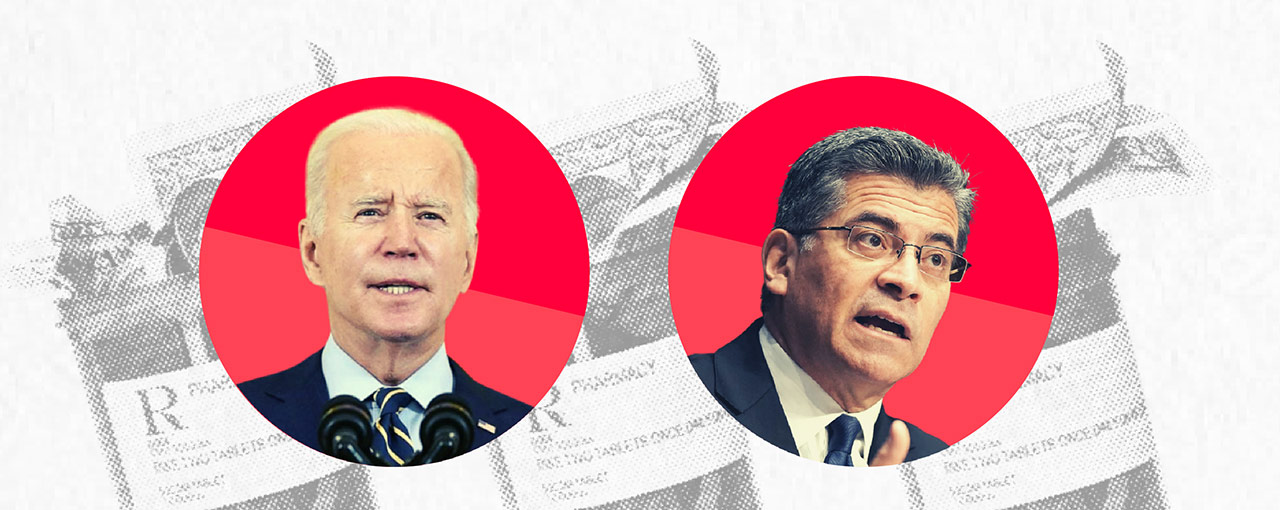Roadmap for Executive Action on Drug Prices
PDF version here
March 24, 2022
The Honorable Xavier Becerra Secretary of Health and Human Services
U.S. Department of Health and Human Services
200 Independence Ave. SW
Washington, D.C. 20201
Dear Secretary Becerra,
High drug prices are crushing patients. One-in-four Americans report they have been unable to afford their medicines. (1) Patients are confronted with impossible choices between medicines and other necessities. Black and Brown communities disproportionately bear this suffering. (2) We are writing to urge you to use your power, under existing law, to expand affordable medicine access and help bring relief to millions of Americans.
Enclosed is our petition. We outline the executive authorities the federal government can use to end patent monopolies, and explain how these tools can be used to make six medicines affordable and accessible to everyone who needs them. The medicines include a cancer treatment, a COVID-19 treatment, an HIV prevention drug, a cure for hepatitis C, an inhaler, and insulin. (3) Exercising executive authorities more widely could be transformative for public health.
As Congress continues to work through legislative reform on drug pricing, it is more imperative than ever that the federal government uses the tools it already has to promote medicine access. Americans support curbing patent monopoly abuse. Eight-in-ten voters favor breaking patent monopolies to reduce drug prices. (4)
By exercising your executive authority, you can help lower drug prices, improve the lives of millions of Americans, and move towards eliminating the epidemics of our time. We appreciated the bipartisan call you led as California Attorney General for the previous administration to expand supply to a high-priced coronavirus treatment by exercising its executive authorities. (5) We hope now as Secretary of Health and Human Services you will choose to deploy these authorities and show the American people that the Biden administration is willing to deliver on its commitments to make medicines affordable. (6) Please do not hesitate to contact us if we can provide more information.
Petition to Make Medicines Affordable
I. Background: Government-granted monopolies constrain access and cause high drug prices.
II. The U.S. government has the power under existing law to bring down prices and increase affordable supply.
a. Government patent use (28 U.S.C. §1498)
b. March-in rights and royalty-free government use rights (35 U.S.C. §§ 203, §202(c)(4))
III. The U.S. government should exercise its authority to expand affordable access to medicines.
a. Xtandi (enzalutamide)
b. Paxlovid (nirmatrelvir and ritonavir)
c. Epclusa (sofosbuvir/velpatasvir)
d. Descovy (tenofovir alafenamide and emtricitabine)
e. Symbicort (budesonide/formoterol)
f. Insulin
IV. By exercising its existing rights to make medicines affordable, the U.S. government can improve the lives of millions of Americans.
I. Background: Government-granted monopolies constrain access and cause high drug prices.
High drug prices are rooted in monopoly power granted by the government. Patents and other exclusivities give corporations the power to set high prices. The federal government does not regulate or by and large even negotiate for the monopoly price.
Pharmaceutical corporations rake in record revenues from this arrangement. Americans pay more than two-and-a-half times as much for prescription drugs than people in other countries. (7) For the 20 top-selling drugs, pharmaceutical corporations made more money in the U.S. than every other country in the world combined. (8) This fact is particularly remarkable given the substantial role of public funding in driving the research and development of new medicines. The National Institutes of Health alone spends $40 billion on R&D a year, setting the foundation upon which much medical research builds.
Once monopolies end, robust generic competition can bring prices down. The introduction of six or more producers into the market, the Food and Drug Administration has found, can lead to price reductions of 95 percent. (9)

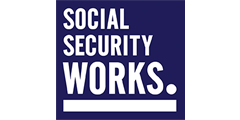
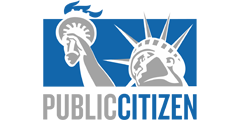
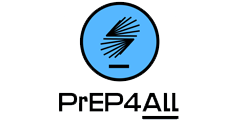
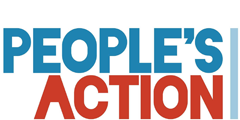
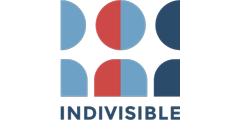

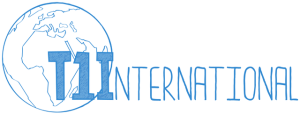
II. The U.S. government has the power under existing law to bring down prices and increase affordable supply.
The federal government has two sources of authorities that can be deployed to introduce generic competition before patent expiration. The “government patent use” authority allows the government to use any patented invention in exchange for reasonable compensation. “March-in rights” and the royalty-free government use license allows the government to introduce additional producers when the patents on a medicine resulted from government funding.
a. Government patent use (28 U.S.C. §1498)
Under 28 U.S.C. §1498, the federal government can authorize generic competition in exchange for reasonable compensation:
Whenever an invention described in and covered by a patent of the United States is used or manufactured by or for the United States without license of the owner thereof or lawful right to use or manufacture the same, the owner’s remedy shall be by action against the United States in the United States Court of Federal Claims for the recovery of his reasonable and entire compensation for such use and manufacture. (10)
The patent holder cannot block the government’s decision to introduce generic competition earlier (i.e., an injunction is not available). Nor can the patent holder bring a “takings” claim under the Fifth Amendment. (11) The sole remedy available is reasonable compensation.
In modern cases, reasonable compensation is typically linked to a determination of a “reasonable royalty.” Where available, courts will rely on previously established commercial royalty rates, but otherwise employ the “willing-buyer, willing-seller rule” and consider a wide range of factors in a fact-specific inquiry. (12) “Under §1498, the “goal of ‘complete justice’ implies that only a reasonable, not an excessive, royalty should be allowed where the United States is the user—even though the patentee, as a monopolist, might be able to exact excessive gains from private users.” (13) Compensation can account for the risk-adjusted cost of research and development, federal subsidies, and a reasonable profit. (14) According to a review published by New York University, “in practice, royalties in §1498 cases rarely exceed 10% of an authorized third-party manufacturer’s revenues.” (15)
The federal government used the law repeatedly in the 1960s to buy low-cost generic versions of patented drugs. The government still routinely uses Section 1498 for other technologies, like night-vision goggles and electronic passports. (16) But in recent years, the power of the pharmaceutical lobby has largely prevented use of the provision to make medicines affordable. Nevertheless, examples include:
- Anthrax Antibiotic: In 2001, the George W. Bush administration publicly considered using Section 1498 for a critical antibiotic, which led the manufacturer to cut the price in half. (17)
- Hepatitis C Cure: In 2017, the Louisiana Secretary of Health began simply to explore whether she should ask the federal government to use Section 1498 on a hepatitis C cure. The drug corporation reaped billions by setting a $84,000 price for a drug that researchers estimate cost less than $30 to produce. (18) Leveraging the prospect of licensing, the Secretary negotiated major discounts. More Louisiana residents received the cure in the next 75 days than in the entire fiscal year before. (19)
The Biden administration can use Section 1498 to expand affordable access to medicines by authorizing generic manufacturers, and providing reasonable compensation to the patent-holder. (20)
b. March-in rights and royalty-free government use rights (35 U.S.C. §§ 203, §202(c)(4))
The Bayh–Dole Act allows the federal government to “march-in” on drug patents developed with federal funding, or to use such patents royalty-free on behalf of the United States. (21)
The federal government has the right to grant additional licenses (“march-in”) on subject inventions developed with taxpayer funding. This includes when the agency finds that the contractor (i.e., pharmaceutical corporation) has not taken “effective steps to achieve practical application of the subject invention.” The law defines practical application as to manufacture or practice “under such conditions as to establish that the invention is being utilized and that its benefits are to the extent permitted by law or Government regulations available to the public on reasonable terms.” (emphasis added)
In standard funding arrangements, the government also retains “a nonexclusive, nontransferrable, irrevocable, paid-up license to practice or have practiced for or on behalf of the United States any subject invention throughout the world.” Because the license is paid-up, no additional royalty is necessary. The Biden administration can use march-in rights and royalty-free rights to introduce additional generic producers for certain publicly-funded medicines.
III. The U.S. government should exercise its authority to expand affordable access to medicines.
The Biden administration can make medicines affordable for millions of Americans by exercising its executive authorities. We highlight six examples below. The list is not exhaustive and, instead, represents a starting point with drugs across disease areas. It includes medicines to treat prostate cancer (Xtandi, enzalutamide) and COVID-19 (Paxlovid, nimretelavir and ritonavir), to prevent HIV (Descovy, emtricitabine/tenofovir alafenamide), cure hepatitis C (Epclusa, sofosbuvir/velpatasvir), inhalers (Symbicort, budesonide/formoterol) and insulin. All the medicines are exorbitantly priced. (In the case of Paxlovid (nimretelavir/ritonavir), patent monopolies are also contributing to shortages.)
Together, the pricing of the medicines is harmful in at least one of three ways. First, the prices are pushing individuals to ration care, or sacrifice other life necessities to be able to afford care. Second, the prices are limiting the ambition of the public health response by, for example, slowing our collective progress against fighting infectious disease. Highly effective breakthroughs cannot have an impact at the population level if governments cannot afford them and make them widely available. Finally, the prices are producing harmful redistributive effects, in which governments are directing scarce budgetary resources to pharmaceutical corporations, instead of other health issues or even other public priorities like education, social services and infrastructure. (22) We outline each drug below. In many cases, generic versions of the drugs have already received regulatory approval but are blocked from market entry due to patent barriers.
a. Xtandi (enzalutamide)
Xtandi is a medicine used to treat advanced prostate cancer sold by Astellas and Pfizer. (23) Xtandi is exorbitantly priced by any measure. The estimated net price of Xtandi in 2020 was $129,000 per year, or close to $90 per capsule. (24) The price of Xtandi is three-to-five times higher in the U.S. than in other high-income countries. In 2020, Astellas and Pfizer made more money selling Xtandi in the U.S. than the rest of the world combined. (25) The year before, Medicare spent more than $1 billion on the drug before rebates. (26) A Canadian manufacturer once offered to sell generic enzalutamide to the U.S. government for $3 per capsule, but the offer was declined. (27)
The originator price poses a barrier to access. For one patient who was briefly placed on the treatment, filing just one prescription cost $625 out-of-pocket. “Drugs like Xtandi force families to focus on and worry about price tags,” he wrote in a submission to HHS. (28) “Please allow American prostate cancer patients the same right to access affordable care as patients around the world.”
The high price of Xtandi also raises concern about health equity. Black Men, in particular, may have disproportionate need for the exorbitantly priced drug, given underlying disparities in prostate cancer mortality and incidence. “Black men have two times the prostate cancer mortality and 60% greater incidence than White men,” one review concluded. (29)
Xtandi was invented at University of California, Los Angeles with U.S. government funding through grants provided by the National Institutes of Health and the U.S. Army. Because the drug was developed through federal grants, the U.S. government retained certain rights, including the right to march-in when underlying taxpayer-funded inventions were not made available on reasonable terms. There are three patents listed in the FDA Orange Book covering Xtandi. (30) All three disclose U.S. government funding.
Table 1: Xtandi patents
| U.S. Patent Number | Patent Expiration |
| 7,709,517 (31) | 8/13/2027 |
| 8,183,274 (32) | 8/24/2026 |
| 9,126,941 (33) | 5/15/2026 |
The march-in statute and related definitions in the Bayh-Dole Act plainly state that a failure to make a subject invention’s benefits “available to public on reasonable terms” is a ground for exercising march-in rights. It would strain credulity to suggest that charging triple the price to consumers who paid for the invention of enzalutamide—namely U.S. taxpayers—is “reasonable.” Hence, the U.S. government can march-in and authorize generic competition.
The Biden administration is currently considering a petition filed by prostate cancer patients on enzalutamide. (34) We urge you to move forward with all due haste to authorize generic competition.
b. Paxlovid (nirmatrelvir and ritonavir)
Paxlovid (nirmatrelvir and ritonavir) is a COVID-19 antiviral sold by Pfizer. The U.S. government has ordered 20 million courses for $530 per course. (35) While Pfizer expects to ramp up global production to 120 million courses by the end of the year, this may represent a fraction of estimated global patient need. (36) Smaller generic firms have developed their own versions of the drug for less than half the price, although none have so far been shown to meet stringent regulatory requirements in other countries. (37) At least thirty generic suppliers are expected to produce Paxlovid for global supply. (38)
However, Paxlovid is currently in shortage in the U.S. The federal government has so far received less than 1 million doses from Pfizer. (39) Pfizer supply is expected to pick up later in the year, but the U.S. may still not have enough. For example, if the 20 million courses ordered by the U.S. government continue to be distributed on a pro rata basis among 50 states, then the allocations will average 400,000 courses per state. (40) Scarcity will make distribution more difficult, particularly as much remains unknown about the course of the virus and its potential severity this winter. Scarcity may also limit the success of the test-to-treat initiative recently announced by the Biden administration.
One of the key components in Paxlovid, nirmatrelvir, is new. As such, there have been no patents granted yet on the drug, although many patent applications have been filed around the world, which will discourage generic entry. Certainly, the generic manufacturers coming online are not currently planning investments with the U.S. market in mind. Pfizer retains a de facto monopoly.
The U.S. government can expand access to affordable supply by signaling that it will use generic supply so long as it can meet FDA requirements. For example, the U.S. government can provide a letter authorizing generic manufacturers for government procurement, thereby providing the shield of Section 1498 if and when patent applications mature into issued patents. In doing so, the U.S. government can reduce prices, increase supply, and help protect more Americans from COVID-19.
c. Epclusa (sofosbuvir/velpatasvir)
Epclusa (sofosbuvir/velpatasvir) is a cure for hepatitis C. (41) It treats all six major types of chronic hepatitis C virus (HCV). Gilead launched an earlier version of the treatment, sofosbuvir, for $1000 per pill in 2014 to significant outrage. (42) “Gilead pursued a calculated scheme for pricing and marketing its Hepatitis C drug based on one primary goal, maximizing revenue, regardless of the human consequences. Gilead knew these prices would put treatment out of the reach of millions and cause extraordinary problems for Medicare and Medicaid, but still the company went ahead,” said Senator Wyden (D.-Ore.) after an investigation into the drug. (43)
Since then, Gilead has introduced authorized generics, including for Epclusa, with a list price of $24,000. Researchers estimate a course of Epclusa costs $85 to produce. (45) Access is still seriously constrained. Several states still arbitrarily restrict access to the drug, including based on substance use and liver damage progression. (46) The drug is grossly underutilized, and 14,242 people died from hepatitis C in 2019 despite the availability of this highly effective cure. (47) Black and Indigenous people die at far higher rates than other groups. (48)
Table 2: Epclusa patents
| Patent Number | Patent Expiration (49) |
| 7,964,580 | 09/26/2029 |
| 8,334,270 | 09/21/2028 |
| 8,590,765 | 09/21/2028 |
| 8,618,076 | 06/11/2031 |
| 8,633,309 | 09/26/2029 |
| 8,735,372 | 09/21/2028 |
| 8,889,159 | 09/26/2029 |
| 8,921,341 | 05/16/2033 |
| 8,940,718 | 05/16/2033 |
| 9,085,573 | 03/21/2028 |
| 9,284,342 | 03/13/2031 |
| 9,757,406 | 07/30/2034 |
| 10,086,011 | 07/30/2034 |
| 11,116,783 | 07/30/2034 |
The U.S. is not on track to meet national public health goals. In 2015, the National Academies of Science and Medicine (NAM) estimated that treating at least 260,000 people each year could help the U.S. achieve hepatitis C elimination by 2030. (50) But according to the CDC, between 2014 to 2020, less than 850,000 people initiated treatment with the new wave of hepatitis C cures, which includes sofosbuvir/velpatasvir. (51) This represents about 120,000 people per year—or less than half the target.
Acute hepatitis C infections are also increasing rapidly, fueled by the opioid crisis. The U.S. Viral Hepatitis National Strategic Plan (2021-2025) notes the importance of treatment as prevention, since people who are treated and cured of hepatitis C cannot transmit the virus to others. However, the plan notes that “the main barriers to treatment as prevention are stigma and the high price of treatment.” (52)
There are multiple global generic suppliers for Epclusa that sell the drug for a fraction of the U.S. list price. (53) The U.S. government can help expand affordable access and lower prices by using Section 1498. Authorizing generics in the U.S. could help produce significant savings, expand access to treatment, and help turn the tide against the HCV epidemic.
d. Descovy (tenofovir alafenamide and emtricitabine)
Descovy is a fixed-dose combination of tenofovir alafenamide and emtricitabine used as pre-exposure prophylaxis (PrEP) to prevent HIV, in addition to being used as part of HIV treatment regimens. Gilead Sciences is currently the only company selling Descovy in the U.S. Gilead charges more than $2000 a month—or $24,000 per year—for Descovy. (54)
Over 1.1 million people need PrEP, but only about 250,000 are currently able to access it. (55) Just 9 percent of Black people for whom PrEP is recommended are taking the drug. (56) Even though PrEP is underutilized, the U.S. healthcare system spends US$1.7 billion on Descovy alone every year. (57) If generic versions were available, that outlay could provide HIV prevention drugs and associated PrEP care to everyone in the U.S. who needs them.
While Gilead today enjoys exclusive control of Descovy, the U.S. government conducted and paid for foundational research on the use of the drug as HIV PrEP. The U.S. government patented its research. (58) In November 2019, the Department of Health and Human Services sued Gilead Sciences for patent infringement. (59) The suit is ongoing. To date, Gilead has not paid a dime for its use of the U.S. government’s patented technology, despite earning many billions from sales of HIV PrEP. Gilead lists three active patents in the Orange Book for Descovy.
Table 3: Descovy patents
| Patent Number | Patent Expiration (60) |
| 7,390,791 | 10/17/2025 |
| 8,754,065 | 02/15/2033 |
| 9,296,769 | 02/15/2033 |
The U.S. government can help increase medicine access by using Section 1498. Descovy is a strong candidate for government patent use because multiple generic versions exist. No fewer than nine separate generic drug manufacturers had filed Abbreviated New Drug Applications as of late 2019, and at least one has already been approved. Unfortunately, generic manufacturers are still embroiled in patent infringement litigation with Gilead Sciences. By using Section 1498, the federal government can partner with generic manufacturers immediately, immunizing these manufacturers from infringement liability and allowing them to proceed to market. In doing so, the U.S. government can help bring more affordable HIV prevention to more patients, and take an important step towards ending the HIV epidemic.
e. Symbicort (budesonide/formoterol)
Symbicort (budesonide/formoterol) is an inhaler sold by AstraZeneca. An estimated 2.7 million patients use the drug in the U.S. (61) While there are concerns about inappropriate use, the drug has been recommended for patients with moderate or severe chronic obstructive pulmonary disease and asthma in adults.
A history of environmental racism in the U.S. means that communities of color may have disproportionate need for Symbicort. Black and Indigenous people have the highest rates of asthma. (62) Black people are more than twice as likely to die from asthma as other groups. (63)
The list price for a 30-day supply of Symbicort ranges between $300-$350. (64) Even after insurance, the cost can be prohibitive. As one patient recalls,
I spend approximately 25% of my monthly income on medical expenses and prescription drugs… There have been issues with my prescriptions every time I fill them. One month, they’ll be covered, and the co-pays will be affordable. And then the next month, they wouldn’t be covered, and the cost would be in excess of $1,200. While some months, I was able to pay for my prescriptions out of pocket, some months, I would have to make the choice [to skip them]. And usually, that would be my asthma medication and inhalers. (65)
The inhaler is covered by a patent thicket. Nine patents are listed in the FDA Orange Book, with the latest expiring in 2029.
Table 4: Symbicort patents
| Patent Number | Patent Expiration (66) |
| 7,587,988 | 10/10/2026 |
| 7,759,328 | 07/29/2023 |
| 8,143,239 | 07/29/2023 |
| 8,387,615 | 09/26/2027 |
| 8,528,545 | 04/16/2029 |
| 8,575,137 | 07/29/2023 |
| 8,616,196 | 10/07/2029 |
| 8,875,699 | 05/10/2025 |
| 10,166,247 | 07/29/2023 |
The FDA has approved a generic version of the drug. (67) But patent monopolies have precluded its launch. A dispute over three patents has lasted more than three years. (68)
The U.S. government can help bring the generic online rapidly by using Section 1498. In exchange for reasonable compensation to AstraZeneca, the U.S. government could allow the generic product to come to market by using its government patent use authority. This could help produce significant savings, and improve access to the inhalers.
f. Insulin
Millions of people in the U.S. rely on insulin. (69) Since 1996, pharmaceutical corporations have increased the price of a vial of insulin from $21 to more than $275. (70) Confronted with industry price-gouging, nearly a quarter of patients who rely on insulin to survive have reported rationing it. (71) Since 2017, at least 12 people in the United States have died from rationing insulin. (72)
There are many different kinds of insulin. Some insulins have seen follow-on, biosimilar, and interchangeable competition, but others are sold exclusively by one corporation. (73) While patents on the insulin compound have expired for some products, patent monopolies on drug-device combinations (e.g., insulin pens) can continue to delay the development of competitor products, keeping prices high. According to a 2020 study, the Big Three insulin manufacturers (Eli Lilly, Sanofi, and Novo Nordisk) all had patents on delivery devices. (74) For example, while Novolog (insulin apart) is no longer covered by patents, the FlexPen typically used to deliver the insulin is covered by three patents. These device patents extend the effective monopoly on the drug.
Table 4: Novo Nordisk FlexPen patents (75)
| Patent Number | Patent Expiration |
| 7,762,994 | 06/20/2031 |
| 8,579,869 | 06/30/2023 |
| 9,265,893 | 09/23/2032 |
The U.S. government can ease barriers to more affordable insulin by authorizing biosimilar manufacturers to use insulin-related patents, including device patents. This will help lower uncertainty and costs for potential competitors, and can pave a faster path to regulatory approval. The U.S. government can also take other steps to bolster access. The U.S. government can undertake public manufacturing of insulin, and investigate potential price-fixing among the three dominant insulin manufacturers. (76)
IV. By exercising its existing rights to make medicines affordable, the U.S. government can improve the lives of millions of Americans.
Last year, you noted that “life-saving prescription medication should not cost anyone their life savings. Yet too often, many low-income families cannot take their prescription medications because of cost concerns.” (77) In this petition, we have described a range of drugs that people struggle to afford, and outlined steps that you can take, starting tomorrow, to help eliminate monopolies and lower prices. You have repeatedly affirmed your commitment to addressing health equity. Making medicines affordable is a critical intervention to support Black and Brown communities and to achieve our shared goals of achieving health equity. Your decisive action can help improve the lives of millions of Americans, and help the country make transformative public health gains. We hope you will take the next step.
cc: President Joe Biden
The Honorable Dr. Lawrence Tabak, Acting Director, National Institutes of Health
The Honorable Susan Rice, Director of the Domestic Policy Council
The Honorable Chiquita Brooks-LaSure, Administrator, Centers for Medicare & Medicaid Services
The Honorable Tim Wu, Special Assistant to the President for Technology and Competition Policy
Notes
(1) Gallup, Medication Insecurity by Race and Political Identity, https://news.gallup.com/poll/316052/large-racial-divide-covid-cost-concerns.aspx
(2) Id.
(3) Our list is not exhaustive and, instead, represents a starting point.
(4) Executive Summary of Arnold Ventures March 2019 Drug Pricing Polling, https://tinyurl.com/amhrukzf
(6) A September report from HHS to the White House Competition Council also referenced these authorities. https://tinyurl.com/3f92uu4w.
(7) RAND, Prescription Drug Prices in the United States Are 2.56 Times Those in Other Countries, https://www.rand.org/news/press/2021/01/28.html
(8) https://www.citizen.org/article/united-we-spend-big-pharma-us-international-revenue-report/
(9) FDA, Generic Competition and Drug Prices: New Evidence Linking Greater Generic Competition and Lower Generic Drug Prices, https://www.fda.gov/about-fda/center-drug-evaluation-and-research-cder/generic-competition-and-drug-prices
(10) 28 U.S. Code § 1498
(11) See Golden v. United States, No. 2019-2134, (Fed. Cir. 2020) ( “The Claims Court does not have jurisdiction to hear takings claims based on alleged patent infringement by the government. Those claims . . . are to be pursued exclusively under 28 U.S.C. § 1498.”) In Golden, the Court also notes “the only avenue to sue the United States government for unauthorized licensing of patent rights is a suit pursuant to 28 U.S.C. § 1498.”
(12) Courts use the fifteen-factor analysis established in Georgia-Pacific Corp. v. U.S. Plywood Corp., 318 F. Supp. 1116, 1120 (S.D.N.Y. 1970).
(13) Tektronix, Inc. v. United States, 552 F.2d 343, 351 (Ct. Cl. 1977)
(14) See Hannah Brennan et al., A Prescription for Excessive Drug Pricing, 18 Yale J. of Law & Tech 1 (2017).
(15) § 1498: A Guide to Government Patent Use
(16) Gargoyles, Inc., and Pro-Tec, Inc., v. United States, 113 F.3d 1572 (Fed. Cir. 1997). RIS Corp. v. Japan Airlines Corp., 769 F.3d 1359, 1360 (Fed. Cir. 2014).
(18) https://www.ncbi.nlm.nih.gov/pmc/articles/PMC7646676/
(19) WAFB, More La. Residents Able to Get Treatment Thanks to State’s New Payment Model (2019), https://tinyurl.com/ror8bch.
(20) § 1498: A Guide to Government Patent Use
(21) KEI, KEI Briefing Note 2017:1. Bayh-Dole Act and difference between March-In Rights and the world wide royalty free rights in patents, https://www.keionline.org/24132
(22) For a historical example, see e.g., https://www.drugpricinglab.org/louisiana-budget-allocator/methods/
(23) https://www.accessdata.fda.gov/drugsatfda_docs/label/2019/203415s015lbl.pdf
(24) $88.54 per capsule, with 4 capsules required every day. https://www.keionline.org/xtandi2021
(25) https://www.citizen.org/article/united-we-spend-big-pharma-us-international-revenue-report/
(26) Medicare Part D Spending Dashboard.
(27) https://www.statnews.com/pharmalot/2016/04/27/cancer-medicare-xtandi-biolyse-pharma/
(28) https://www.keionline.org/wp-content/uploads/Xtandi-Letter-Mermell-26Jan2022.pdf
(29) https://www.nature.com/articles/s41391-021-00451-z
(30) There is also a regulatory exclusivity for one indication that expires late this year.
(31) This invention was made with United States Government support under National Institutes of Health SPORE grant number 5 P50 CA092131 and Department of Defense (Army) grant number W81XWH-04-1-0129. The Government has certain rights in the invention.
(32) This invention was made with United States Government support under National Institutes of Health SPORE grant number 5 P50 CA092131and Department of Defense (Army) grant number W81XWH-04-1-0129. The Government has certain rights in the invention.
(33) This invention was made with Government support under Grant No. W81XWH-04-1-0129 awarded by the United States Army, Medical Research and Materiel Command; Grant No. CA092131 awarded by the National Institutes of Health. The Government has certain rights in this invention.
(34) https://www.keionline.org/xtandi2021, https://www.huffpost.com/entry/biden-drug-prices-xtandi-cancer_n_62113cf4e4b0f93b26194783
(36) https://www.citizen.org/article/letter-urging-pfizer-to-address-paxlovid-inequality/
(37) https://www.citizen.org/article/paxlovid-patent-landscape/
(39) https://www.phe.gov/emergency/events/COVID19/therapeutics/distribution/Pages/data-tables.aspx
(40) “An initial 65,000 courses of Paxlovid will be made available for shipment to states and territories and will begin arriving at dispensing sites by the end of December. Initial allocations of Paxlovid were determined on a pro rata basis and will be provided to state and territorial health departments for free.” https://www.phe.gov/emergency/events/COVID19/investigation-MCM/Paxlovid/Pages/default.aspx
(41) https://www.accessdata.fda.gov/drugsatfda_docs/label/2017/208341s007lbl.pdf
(45) https://www.ncbi.nlm.nih.gov/pmc/articles/PMC7646676/
(46) https://stateofhepc.org/wp-content/uploads/2022/01/HCV_State-of-Medicaid-Access_Jan-2022_v2.pdf
(47) https://www.cdc.gov/nchhstp/newsroom/docs/factsheets/Hepatitis-c-by-the-numbers.pdf
(48) https://www.cdc.gov/hepatitis/statistics/2019surveillance/Table3.8.htm
(49) This includes six months pediatric exclusivity.
(50) 2014-2020 Hepatitis C Treatment Estimates | Newsroom | NCHHSTP | CDC
(51) https://www.cdc.gov/nchhstp/newsroom/2021/2014-2020-hepatitis-c-treatment-estimates.html
(52) Viral Hepatitis National Strategic Plan Overview | HHS.gov
(53) https://www.theglobalfund.org/media/7500/ppm_strategicmedicineshivreferencepricing_table_en.pdf
(54) https://www.gileadpriceinfo.com/descovy
(57) Centers for Disease Control and Prevention. Interactive Atlas of HIV, hepatitis, STDs, tuberculosis, and social determinants of health. https://www.cdc.gov/nchhstp/atlas/index.htm. Accessed February 25, 2022. Gilead Sciences, Inc “2021 Form 10-K Annual Report” URL: https://investors.gilead.com/static-files/9084889f-c0bc-4e41-995c-387a2ff1a4fc.
(58) U.S. Patents Nos. 9,044,509; 9,579,333; 9,937,191; and 10,335,423.
(59) United States v. Gilead Sciences Inc. https://www.prep4all.org/s/United-States-of-America-v-Gilead-Sciences-Inc-and-Gilead-Sciences-Ireland-UC-1.pdf
(60) This includes six months pediatric exclusivity.
(61) https://clincalc.com/DrugStats/Drugs/BudesonideFormoterol
(62) https://www.lung.org/research/trends-in-lung-disease/asthma-trends-brief/current-demographics
(63) https://www.cdc.gov/asthma/data-visualizations/mortality-data.htm#anchor_1569600183140
(64) https://www.mysymbicort.com/cost-assistance.html
(65) Erin Jackson-Hill, Stand Up Alaska, Make Meds Affordable Campaign Launch, https://www.youtube.com/watch?v=AR2jrSdToj8
(66) This includes six months pediatric exclusivity.
(69) https://gis.cdc.gov/grasp/diabetes/DiabetesAtlas.html#
(70) Public Citizen, T1International, Legislative Guide for Insulin for All (2020), https://www.citizen.org/article/legislative-guide-for-insulin-for-all/
(71) https://www.t1international.com/blog/2021/10/18/t1international-survey-diabetes-covid-rationing/
(72) Public Citizen, T1International, Legislative Guide for Insulin for All (2020), https://www.citizen.org/article/legislative-guide-for-insulin-for-all/
(73) Insulin lispro, insulin glargine.
(74) Sanofi Solostar, Eli Lilly Humalog Kwikpen, Novolog FlexPen. https://academic.oup.com/jlb/article/7/1/lsaa061/5918811
(75) https://www.novonordisk-us.com/products/product-patents.html
(76) https://investigateinsulinnow.com/ and https://www.statnews.com/pharmalot/2021/03/29/ftc-insulin-diabetes-lilly-novo-sanofi-antitrust/. https://www.washingtonpost.com/opinions/elizabeth-warren-its-time-to-let-the-government-manufacture-generic-drugs/2018/12/17/66bc0fb0-023f-11e9-b5df-5d3874f1ac36_story.html
(77) HHS Secretary Xavier Becerra Releases Bold Proposal to Lower Prescription Drug Costs | HHS.gov
